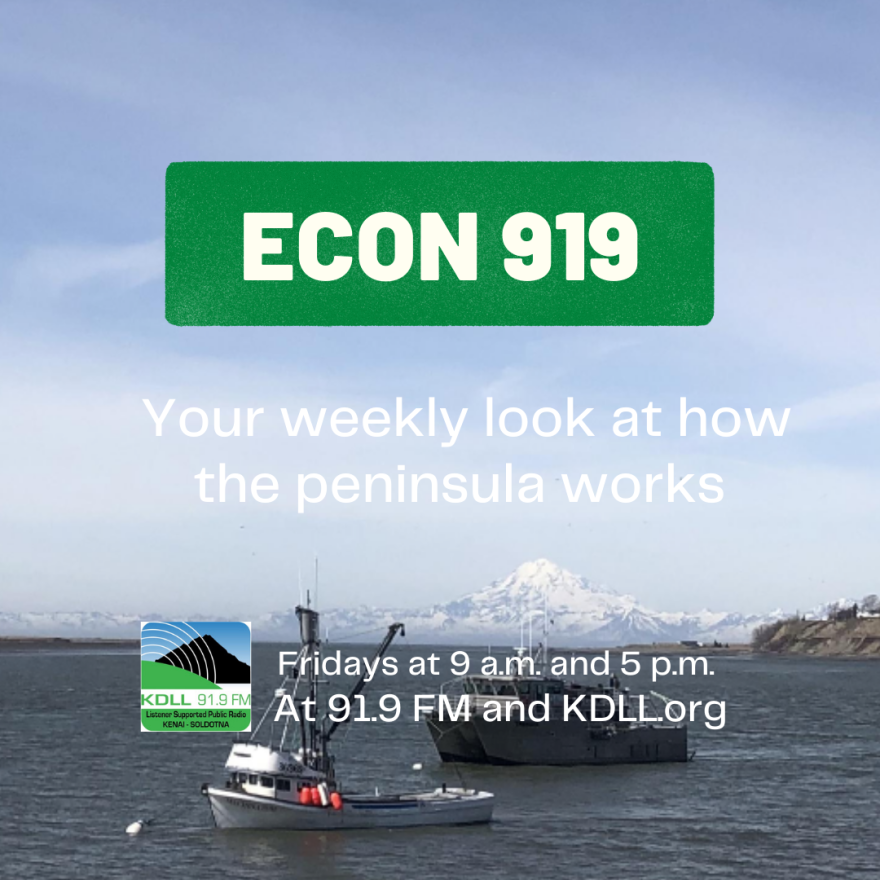Fishermen in Cook Inlet reeled in more salmon and higher earnings in 2021 than they did last year. That’s according to the 2021 harvest summary released by the Alaska Department of Fish and Game earlier this week.
But comparing 2020 and 2021 reveals just a small part of a much larger story about the state of the fishery.
"What you’ve got is a bad combination of a catch that’s been falling and a price that is also down from two years ago," said Gunnar Knapp, a professor emeritus at the University of Alaska Anchorage Institute of Social and Economic Research.
Knapp has been studying Alaska’s salmon fisheries for decades and he says this year’s numbers, though an improvement from last year, still point to the gradual decline of the Cook Inlet salmon fishery.
2020 was an especially bad season for fishermen. But it was somewhat of a fluke, caused in part by markets unsettled by COVID-19.
“Last year was like — well, it was one of the worst seasons since '69," said long-time Cook Inlet drift fisherman Thor Evenson.
Prices for sockeye were low, at an average $1.45 per pound in the inlet.
This year, Cook Inlet fishermen earned an average $1.83 per pound for sockeye. (Though it’s important to note those prices are all preliminary and don’t account for any post-season bonuses.)
Fishermen also brought in more salmon this year versus last year. As a whole, the monetary value of the commercial fleet’s landings, or the ex-vessel value, was almost $19 million this year across salmon species, compared to $10 million in 2020.
"It was a lot better than last year," Evenson said. "But I haven’t been really happy. I think we had a couple years, 2008 or 2009, we had a half-decent season here.”
That bigger picture is really important, Knapp said, for understanding what’s going on in the inlet.
In the last 10 years, the size of the harvests, and the values of those harvests, have gone down. This year did not buck the trend.
And the mean permit price for the Cook Inlet drift fishery in 2021 is low at $22,500, according to data from the Commercial Fisheries Entry Commission. In 2018, a Cook Inlet drift permit cost nearly twice that.
Knapp said that data point in particular is disturbing.
“Permit value is what people think the right to participate in a fishery in the future is worth," he said. "And if the value’s dropping, which is not surprising, it suggests that they’re valuing that right less and less.”
As for why the run’s declining, scientists aren’t entirely sure.
Changing ocean temperatures have impacted some fisheries, like the Pacific cod fishery.
Management, too, can play a role. Some fishermen point to overescapement of the Kenai River and restrictions on their fisheries.
"We had a really big show on a Saturday and Sunday, I think in late July," Evenson said. "It was like 150,000 went up the river two days in a row. But we weren’t fishing those days.”
It’s a mixed bag around the state. The graph of permit prices in Bristol Bay is the mirror image of that of Cook Inlet. This year, the Bristol Bay fleet had an ex-vessel value of nearly $250 million, according to Fish and Game data. At the same time, salmon runs in Chignik, on the other side of the Alaska Peninsula, have plummeted.
Knapp said there are some things you can’t glean from the numbers alone, like the fixed costs for fishermen.
And he said there’s another variable impacting fishermen as they make decisions.
"One thing is the problem of uncertainty," he said. "Uncertainty driven by politics. And that would hold whether you’re a commercial fisherman or a sport fisherman or a personal-use fisherman, or whatever. Because there are so many issues, the future is constantly a little uncertain.”
He said that uncertainty, and the fear of losing opportunities to fish, makes it hard for fishermen to make investments in the future. Because who knows what it will hold.





